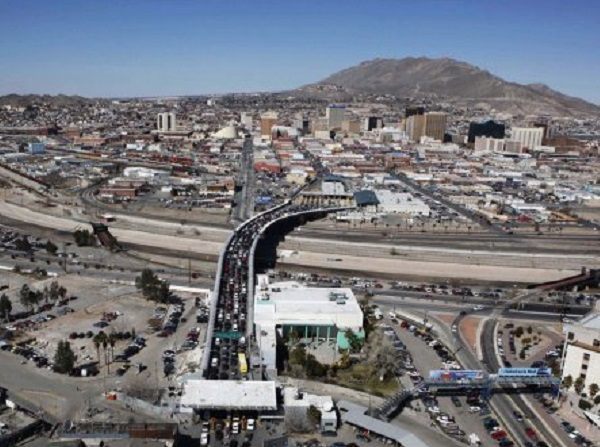Texas leads the pack of desirable states in which Americans choose to live but people leave one Texas border city more than any other community in the United States.
El Paso ranks as the number-one metropolitan area that Americans ditch, says Bloomberg Business. People pack up for other parts of the state and the country. In 2013-14, nearly 8,500 people left, according to U.S. Census Bureau. Experts blame the exodus on El Paso’s slow job market. Opportunities elsewhere likely lure people away, according to the El Paso Times.
“In recent years, there have been other regions of Texas, as well as the Southwest in general, where economic growth has been faster than in El Paso,” University of Texas at El Paso (UTEP) Economics and Finance Professor Tom Fullerton told the local news outlet. “Whenever that occurs, that tends to draw people away from El Paso because they see job opportunities. They’re strong magnets for mostly young, working-age people.”
Bloomberg Business noted that, unemployed college graduates who move to the booming Dallas and Austin economies, constitute most of the exiting El Pasoans. Oil field jobs in Midland-Odessa are also magnets, says Fullerton. He remains hopeful that once the “boom ebbs, El Paso may get some people back.”
Retired UTEP demographer Cheryl Howard told the El Paso Times that the city “has billed itself as a low-wage job place — call centers, service sectors, these are not high-tech jobs.” She added: “We graduate a lot of engineers, a lot of people with high-tech degrees. Where are they going to work?”
Those young, college educated El Pasoans who are unemployed, underemployed or in dead-end jobs leave for the jobs in the big cities. Others likely to leave are people who are monolingual and those with high school diplomas or less, said UTEP Center for Inter-American and Border Studies Director Josiah Heyman.
Besides low employment rates, incomes along the U.S. border region are low compared to other parts of the country, stated Heyman. The exception to this rule is San Diego, California, where the median household income is 12.3 percent above the rest of the nation, according to the San Diego Reader.
“People in the middle and those who are bilingual” are most likely to remain in El Paso. Heyman believes this is telling about the cultural features and limits of a border economy.
There were some gains in El Paso. Births and immigration contributed to population growth, although Bloomberg asserted that the border city “saw a surprisingly small number of foreigners settling in given how close it is to Mexico.”
The El Paso Times identified a similar attrition problem over a decade ago. The number of people who left the city over the past two years mirrored those who vacated between the late 199os into the early 2000s.
City officials hope that improvements to infrastructure, revitalization efforts, and housing and transportation projects will curtail further population declines in the coming years.
Despite El Paso’s weaknesses, United Van Lines said Texas was the #1 state that people were moving to live in 2014, according to the Independent Journal Review. Competitor Allied Van Lines named Texas as the top customer destination for a decade in its 2014 end-of-year report. Since April 2010, the Lone Star state added 1.3 million new residents. It also upped non-governmental jobs by 12 percent since 2007. If people moving from other states and immigration patterns continue, Texas population figures to swell to 54.4 million by 2050.
Breitbart Texas reported on the Dallas red hot real estate market.
Follow Merrill Hope on Twitter @OutOfTheBoxMom.

COMMENTS
Please let us know if you're having issues with commenting.